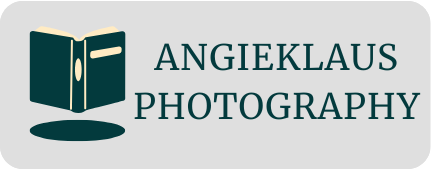In a world overflowing with information, personalized plans stand out like a unicorn in a herd of horses. They’re not just another set of instructions; they’re tailor-made roadmaps designed to guide individuals toward their unique goals. Imagine having a GPS that not only knows your destination but also avoids traffic jams and the dreaded detours. That’s the magic of reading personalized plans.
But let’s be honest—navigating these plans can sometimes feel like deciphering ancient hieroglyphics. With all the jargon and fine print, it’s easy to get lost. Fear not! This article will break down the essentials of reading personalized plans, ensuring you don’t end up in the Bermuda Triangle of confusion. So grab a cup of coffee, settle in, and get ready to unlock the secrets that will turn those plans into your personal success story.
Table of Contents
ToggleUnderstanding Personalized Plans
Personalized plans serve as tailored strategies designed to help individuals achieve specific goals. These plans incorporate unique preferences and circumstances, making them effective tools for maximizing success.
What Are Personalized Plans?
Personalized plans consist of customized strategies that cater to individual needs and objectives. Each plan may include specific actions to reach desired outcomes effectively. These strategies often include timelines and milestones to measure progress. They vary in structure and complexity based on personal goals, whether for fitness, career, or personal development. Users can engage more deeply in the process by understanding these personalized elements.
Importance of Personalization in Reading
Personalization enhances the reading experience by matching content with individual interests. Customized reading plans allow readers to focus on materials that are most relevant to them. This relevance increases motivation and encourages consistent reading habits. Furthermore, when readers engage with content that resonates, comprehension and retention improve. Tailored approaches ensure that learning remains relevant and enjoyable, fostering a more effective reading journey.
Benefits of Reading Personalized Plans

Reading personalized plans offers significant advantages. Tailored strategies lead to a better understanding of one’s objectives.
Enhanced Engagement
Engagement with personalized plans significantly increases. Individuals find that content aligned with their interests captures attention more effectively. They actively participate in the learning process, enjoying material that’s relevant to their lives. Personalized plans not only highlight relevant goals but also outline actionable steps needed to achieve them. By presenting information in a familiar context, these plans foster deeper investment in activities. Motivation rises when individuals see progress tracked within personalized frameworks. People naturally gravitate toward content that resonates, making learning enjoyable and fulfilling.
Improved Comprehension
Comprehending personalized plans enhances learning outcomes. Clarity arises when individuals read material designed specifically for them. Specific goals and structured timelines clarify expectations, making it easier to grasp essential information. Tailored content addresses individual strengths and weaknesses, allowing for focused improvement. Each element works together to build a coherent understanding of objectives. By simplifying complex jargon, personalized plans help bridge gaps in knowledge. Individuals experience greater retention of information when it relates directly to their goals. Enhanced comprehension leads to better decision-making and successful attainment of set objectives.
How to Create Effective Personalized Plans
Creating effective personalized plans requires a systematic approach that includes assessing individual needs and setting clear goals.
Assessing Individual Needs
Identifying specific requirements plays a crucial role in developing personalized plans. Gather data through self-assessments or surveys to understand preferences, strengths, and weaknesses. Regular check-ins help to evaluate progress and adapt strategies as needed. Attention to individual circumstances ensures that the plan remains relevant and practical. Listening to feedback from the individual provides insights that aid in fine-tuning the approach. Personal experiences offer valuable context that enhances the customization of the plan.
Setting Goals and Objectives
Establishing clear, achievable goals is vital for success. Define short-term and long-term objectives that align with the individual’s interests and aspirations. Consider using the SMART criteria: Specific, Measurable, Achievable, Relevant, and Time-bound. Breaking down larger goals into smaller tasks creates manageable steps that lead to progress. Tracking milestones motivates continued engagement and effort. Reassessing goals periodically allows for adjustments based on changing needs or circumstances, ensuring sustained relevance and commitment.
Tips for Utilizing Personalized Plans
Personalized plans thrive on continuous improvement. Engaging with feedback ensures that these plans remain relevant and effective.
Incorporating Feedback
Gathering feedback is essential for optimizing personalized plans. Regularly collecting insights from mentors, peers, or self-reflection enhances the plan’s effectiveness. Understandably, some may hesitate to seek feedback, yet constructive criticism often unveils blind spots. Use surveys or informal check-ins to encourage open communication. Feedback should guide adjustments to content, scheduling, or strategies. Embracing suggestions increases motivation and helps individuals stay aligned with their goals.
Adjusting Plans as Needed
Flexibility plays a crucial role in utilizing personalized plans. Adapting strategies as circumstances change boosts success rates. Periodic evaluations of progress provide valuable insights into what’s working and what isn’t. When setbacks occur, reassessing timelines or adjusting goals becomes necessary. Incorporating new information or resources can lead to improved outcomes. By remaining open to revision, individuals can address evolving needs or interests, enhancing the overall effectiveness of their personalized plans.
Conclusion
Personalized plans serve as essential tools for individuals aiming to reach their unique goals. By aligning strategies with personal interests and circumstances, these plans enhance motivation and engagement in the learning process. The clarity offered by well-structured personalized plans simplifies complex concepts, allowing for better decision-making and progress tracking.
Moreover, the emphasis on flexibility ensures that individuals can adapt their plans as needed, fostering continued growth and development. With regular assessments and feedback, personalized plans can evolve to meet changing needs, ultimately guiding individuals toward success. Embracing this tailored approach can transform the journey toward achieving personal objectives into a more enjoyable and effective experience.



